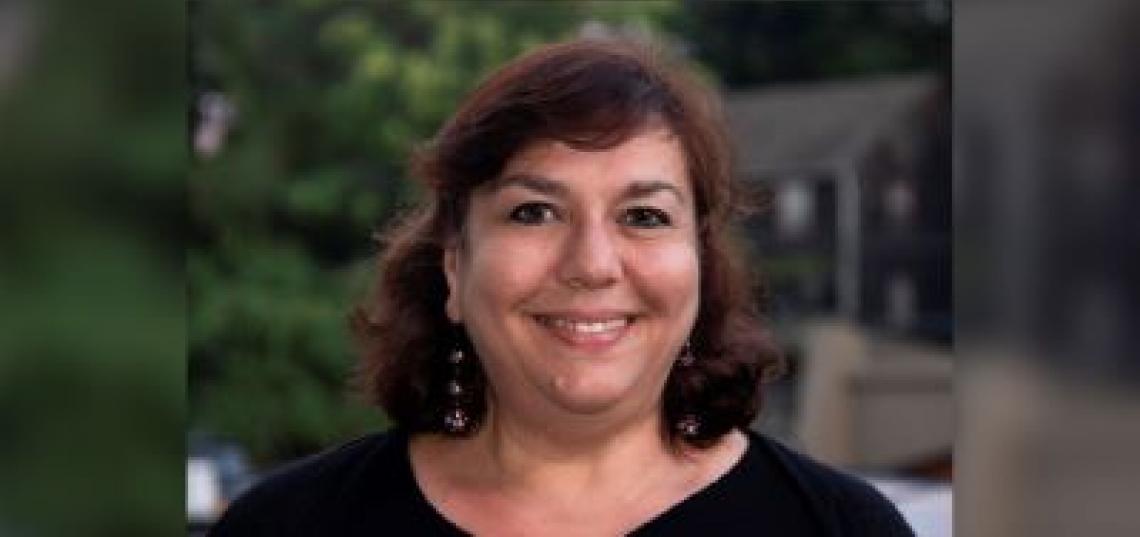
Yonah Levenson MI’16, is the manager of metadata strategy and terminology governance, at WarnerMedia. In March of 2019, she gave a presentation called, “Metadata and Taxonomies: You Don’t Have to Start from Scratch,” at the Henry Stewart DAM conference held in New York City. In December 2020, the Henry Stewart organization announced that Yonah’s presentation was the number-one most watched video from their collection for 2020! Yonah is also the co-founder, co-director, and one of the instructors in SC&I’s Digital Asset Management (DAM) certificate program.
Yonah earned a bachelor of science degree in Mass Communications and Public Relations from Boston University and spent a number of years in the change management side of publishing. Prior to joining WarnerMedia, she was with Pearson Education and spent almost 16 years there, first as a senior business analyst and then as a senior metadata analyst. She graciously agreed to answer a few questions for SC&I.
What drew you to pursue a master’s degree in Information Science with a concentration in Library Studies from SC&I?
Throughout my career, I have brought change wherever I worked. I revised workflows for efficiency which typically included how to tag the content for presentation using markup like HTML and XML. Along the way, metadata became increasingly important, and a number of the people I was working with (some who also had MLIS degrees from Rutgers) encouraged me to get my Master of Information at SC&I. I finally gave in to the pressure, and am I glad I did! Having an MI degree with a concentration in Library and Information science opened many doors, and gives me “street cred” as it provides validity that I know what I’m talking about.
What classes/professors had the most lasting impact on you?
Oh, wow, the Rutgers MI program has wonderful instructors, but I will say that Lilia Pavlovsky was the most influential. I took her Competitive Intelligence course, and we ended up having interesting discussions about the skills a business information professional needed vs. someone who planned to work in any kind of a library.
There is definitely overlap, but there are some big differences. Interestingly enough, those conversations led to my helping form and direct SC&I’s Digital Asset Management (DAM) certificate program. Working with DAM applications is a wonderful convergence of library science, workflows, and program management, and our program teaches the necessary skills and best practices to those who want to learn more about DAM, or are already working with DAM. Many of us honed our skill sets by learning on the fly, and the DAM certificate program is a fantastic forum to share our knowledge and subject matter expertise, allowing our participants to implement more effective systems and processes.
What would you list as the top skills and take-aways from the MI program?
I had been working with metadata and taxonomy development for a number of years before I started the MI program, but I knew that I had knowledge gaps. The MI program was the right place for me to fill those gaps. I learned so much about when and where library science got its start, and my ability to draw on that foundational knowledge has helped me in my career. Throughout my career, I have also worked closely with archivists, and courses in the MI program were directly applicable to how I work and support these business areas.
How did your presentation, “Metadata and Taxonomies: You Don’t Have to Start from Scratch,” come about?
I’m a big proponent of not reinventing the wheel. I speak at multiple conferences every year, and the topics I choose to cover are always metadata related. Often when organizations are getting ready to implement a new system or update an existing system, they end up reviewing and revising, and/or extending the existing metadata. The organizations think they need to start from scratch, but the reality is that there are an enormous number of existing metadata standards to use as the starting point. No matter what, there will be some cross-mapping as part of the analysis. By including existing standards that are appropriate for your line of business/department, and including them in the cross-map, one can save time and effort, and keep projects moving along. Otherwise, you’re back to reinventing the wheel, and who has the time and resources for that these days?
As a metadata expert, what advice do you have for current and future students at either the undergraduate or graduate level?
Cross maps are your friend. They are so useful for identifying patterns, which is extremely important when working with metadata and taxonomies. Document the work—make sure there is a definition for each and every term. Make sure you keep track of approvals from the subject matter experts etc. so when someone asks about a specific term, whether it’s a metadata field or a controlled vocabulary value, you have the provenance for the terminology, and then you don’t have to reinvent the wheel. Remember, you know more than you think you know! Don’t be afraid to speak up! Ask lots of questions wherever you are working or volunteering. For more tips and tricks, take my Metadata for DAM course which is offered through the DAM certificate program.
